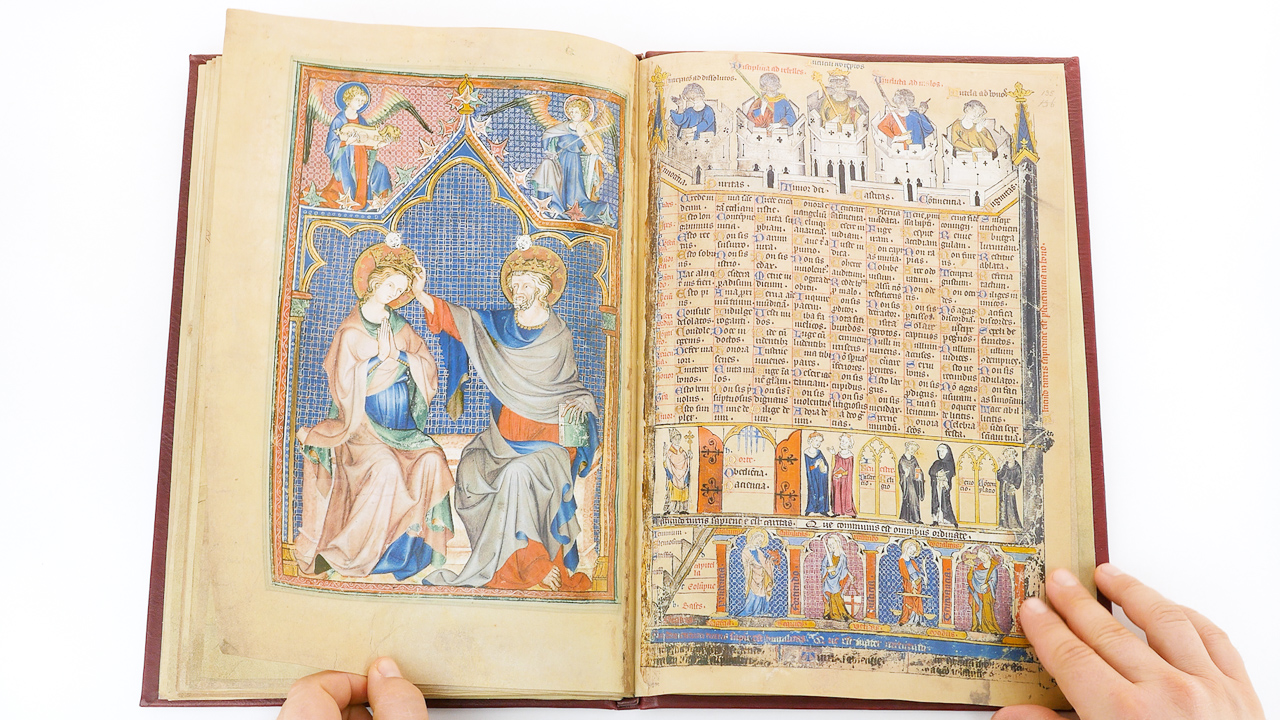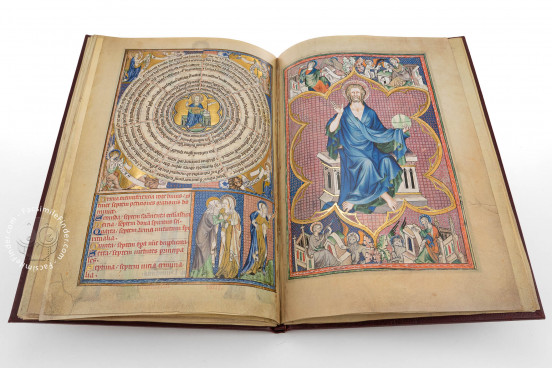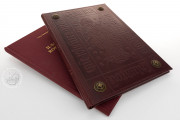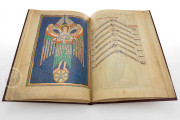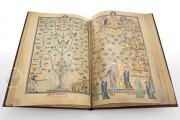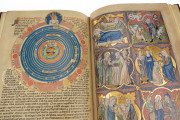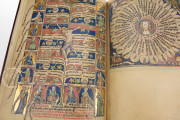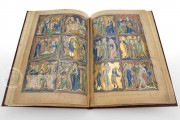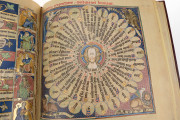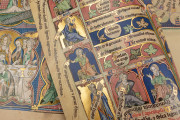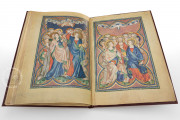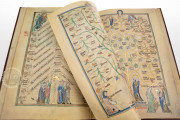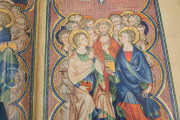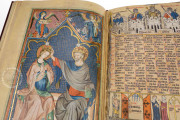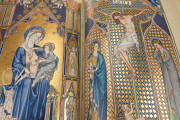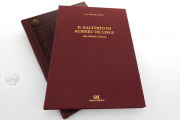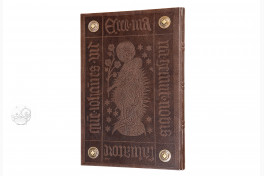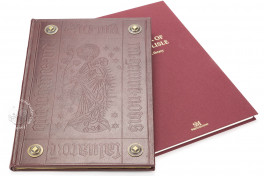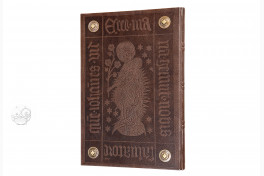The De Lisle Psalter is a fragmentarily preserved English psalter of the early fourteenth century. It comprises a calendar, thirteen full-page diagrams, ten full-page miniatures, and one half-page miniature that once prefaced the text of the biblical book of Psalms. The fragment is named for its original owner, Robert de Lisle. Probably made at Westminster, it is an object of private Christian devotion commissioned by a highly literate and pious nobleman.
The manuscript is the work of three artists. Its twenty-four pages of paintings, which include narrative and devotional subjects and diagrams of rich colors and brilliant gold, constitute a program of sophisticated theology.
Two Masters of Gothic Illumination
Three painters contributed to the De Lisle Psalter. Most of the illuminated pages were painted around 1310 by the Madonna Master, named for his miniature of the Virgin and Child in this book (fol. 131v). His work is highly theatrical and emotional, with exquisitely rendered drapery. A second anonymous painter worked on one miniature and three diagrams at this time.
The program of illumination was completed in the 1330s by the Majesty Master, named for the miniature of Christ in Majesty (fol. 130r). His figures are imbued with great physicality, betraying the influence of contemporary Parisian painting. Yet, despite the change in artists and delay in completion, the psalter boasts a homogenous quality.
Early English Example of the Three Living and the Three Dead
The subject of the Three Living and the Three Dead appears as a half-page miniature (fol. 127r). The left half shows three young kings in fine clothing passing along a road during a hunt. There they meet with three corpses, shown on the right. The poses of the dead on the right mirror those of the living on the left, visually connecting the warning of the deceased captured in the French-language text above, which implores the living to cast aside vain pursuits to tend instead to their immortal souls.
Exquisitely Rendered Diagrams
The manuscript is remarkable for its stately and engaging presentation of diagrams explicating aspects of Christian theology, including the Tree of Life (fol. 125v); the Wheel of Human Life (fol. 126r); the Ages of Man, also shown as a wheel (fol. 126v); and tables of the Ten Commandments and the Twelve Articles of Christian Faith (fols. 127v-128r).
Robert de Lisle, Pious Baron
Robert de Lisle (1288-1344) was elevated to baronial status by Edward II (1284-1327), King of England. The illuminations for his psalter reflect his interest in reflection on matters of the spirit. His stated wish was that the psalter would pass to two of his daughters and, upon their deaths, to the Gilbertine priory of Chicksands (fol. 122v, dated 1339). Possession, however, is untraced until 1590 when William Howard (1563-1640) inscribed his name on fol. 117r. He probably had it bound with a similar work, the Howard Psalter (MS Arundel 83, fols. 1-116).
William bequeathed the combined manuscript to his nephew Thomas Howard (1585-1646), Earl of Arundel. Henry Howard (1628-1684), Duke of Norfolk, presented it to the Royal Society in 1667. The British Museum purchased hundreds of Arundel manuscripts, including the De Lisle Psalter, from the society in 1831. The manuscript holdings of the British Museum were transferred to the British Library in 1973. The present binding dates from 1963.
We have 3 facsimiles of the manuscript "De Lisle Psalter":
- De-Lisle Psalter facsimile edition published by Mueller & Schindler, 2008
- Salterio di Robert de Lisle facsimile edition published by Scripta Maneant, 2008
- Salterio de Lisle facsimile edition published by Eikon Editores, 2008

